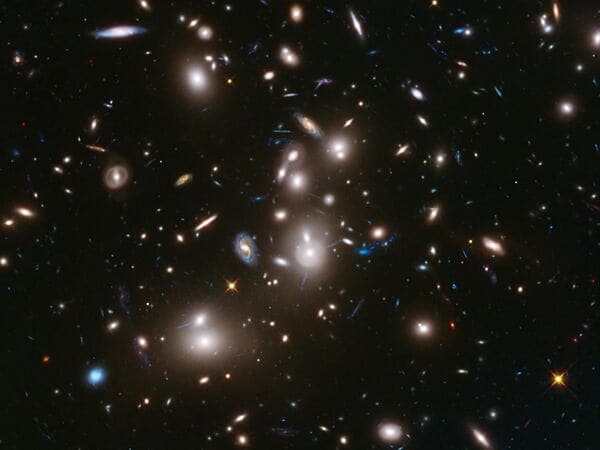What determines the growth of the galaxy, the local bias, and the rate at which stars are born?
 A large cluster of galaxies, Abell 2744. by the Hubble Space Telescope. (Provided by:NASA/ESA/STScI)
A large cluster of galaxies, Abell 2744. by the Hubble Space Telescope. (Provided by:NASA/ESA/STScI)
Go to gallery page
(Taro Kotani: University teacher and science writer)
If you look into the depths of space with a telescope, you’ll find clusters of stars floating in the air. galaxy.
It seems that the galaxy emits the same light whenever we look at it, but the galaxy changes and grows over the long time span of hundreds of millions and billions of years.
Some galaxies grow gradually as stars are born one after another inside them, but some galaxies show little growth.
How do such differences arise? What are the factors that make galaxies grow?
A study using the Subaru Telescope’s ultra-wide-field prime focus camera suggests that a supermassive black hole in the central galaxy of a galaxy cluster controls the growth of other galaxies.*1、2. What kind of power does a supermassive black hole dominate other galaxies?
What is a galaxy cluster
Our Sun is one of 100 billion stars in the Milky Way galaxy. 100 billion stars is a huge scale, and even if 10 stars are distributed to each person on the earth, there will be a surplus (as of 2023).
There are many such galaxies in space. It is estimated that there are about 100 billion galaxies floating in the observable range of the universe. In other words, even if 10 galaxies are distributed to each person on the earth, there will be a surplus.
However, please be aware that galaxies with 100 billion stars like our Milky Way galaxy are pretty big, and most of the galaxies you get are much smaller.
Galaxies are not evenly distributed in the vast universe, but there are clusters of galaxies here and there, and conversely, there are gaps where there are almost no galaxies. A group of more than 100 galaxies is called a “cluster of galaxies”.
A typical galaxy cluster is about 3 million light-years wide, and its interior is filled with hot “cluster gas” in addition to floating galaxies. Even though it is called gas, it is extremely thin, and it is much thinner than the vacuum that can be created by the highest performance vacuum pumps developed by mankind. The temperature of the gas is tens of millions to hundreds of millions of degrees Kelvin, which is hotter than the surface of the sun.
At the center of most galaxy clusters, a large “elliptical galaxy” can be seen sitting like a master. An elliptical galaxy is an elliptical galaxy that does not have the pattern of a spiral galaxy and has a sticky texture.
So far, I have introduced the galaxy cluster, which is the stage of this research presentation.


